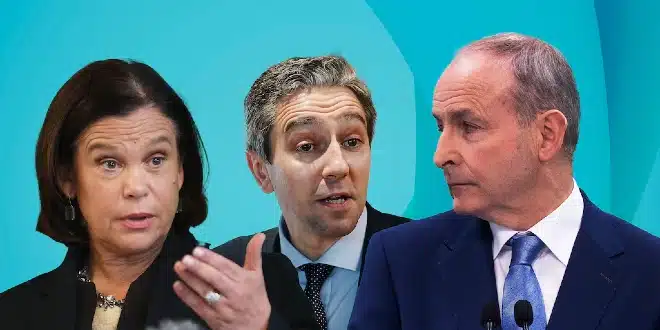As the General Election count nears its conclusion, RTÉ’s Political Correspondent Paul Cunningham outlines the five steps needed to form the next coalition government.
Parliamentary Party Meetings
Fianna Fáil and Fine Gael are expected to lead the formation of the next government, likely holding around 86 seats in the 34th Dáil, just short of a majority in the expanded 174-seat chamber. This week, both parties will hold separate meetings. Fianna Fáil is anticipated to have 48 TDs, about 10 more than Fine Gael.
They will review their positions and discuss their priorities for the future government. Over half of the Fine Gael deputies are new to Leinster House, as 18 of their outgoing TDs have retired. The party will focus on its new policy platform before initiating talks with others.
Fianna Fáil and Fine Gael Policy and Structure Negotiations
Once both parties have clarity on their objectives, they will select negotiators to outline a Programme for Government. They have successfully collaborated in the past, from 2020 and through a confidence-and-supply deal between 2016 and 2020, so this process is not expected to be overly challenging.
In addition to policy, they must agree on the government’s structure. Fine Gael desires a rotating Taoiseach position between Simon Harris and Micheál Martin, similar to the previous arrangement. If this is agreed upon, Fianna Fáil will likely insist on their 10-seat advantage being reflected in Cabinet positions, though negotiations may be intense.
Choosing Coalition Partners
After reaching a preliminary agreement, Fianna Fáil and Fine Gael will look to engage with other parties, excluding Sinn Féin. The Social Democrats and the Labour Party have significantly increased their numbers in the 2024 General Election, and either could provide a solid majority in Dáil Éireann.
The key question will be what concessions Fianna Fáil and Fine Gael will need to make to secure their support. Labour appears to be the preferred partner, but either party will negotiate firmly. If no deal is reached, Fianna Fáil and Fine Gael may consider a coalition with a bloc of Independent TDs, which has worked in the past.
Finalizing a Programme for Government
Once a preferred coalition is selected, the detailed Programme for Government must be finalized. This phase is crucial, as it outlines the policy commitments for the next five years. If a policy isn’t included in this document, there is no obligation to prioritize or deliver it.
This stage requires compromise from all parties, ensuring that enough of their key policies are included to justify joining the government. Once agreed upon, leaders will finalize the allocation of Cabinet positions.
Dáil Vote
If the coalition reaches this stage, the Dáil vote will be largely ceremonial, as the incoming government will already have secured a majority. The Dáil is set to reconvene on 18 December, likely only to elect a Ceann Comhairle. It is improbable that the new coalition government will be in place before Christmas, and even having it operational by January is not guaranteed.
 The Daily Star Ireland
The Daily Star Ireland



